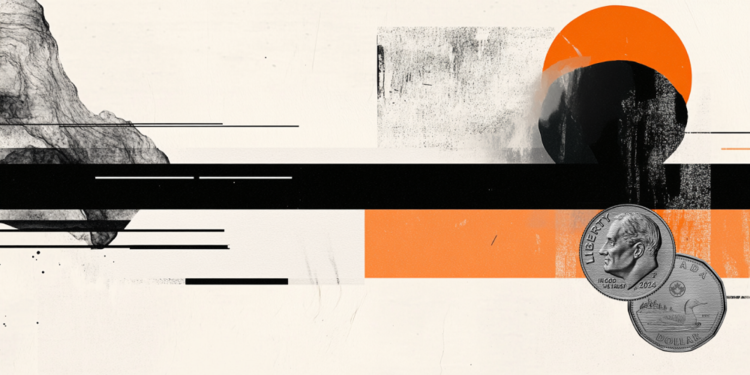- USD/CAD could increase further due to fresh tariffs from US President Donald Trump.
- The latest FOMC Meeting Minutes emphasized needing more time to assess multiple factors before considering any rate adjustments.
- The Bank of Canada may rethink its approach to policy easing after January’s inflation data indicated an upward trend.
USD/CAD remains steady after two successive days of gains, trading around 1.4230 during the Asian hours on Thursday. The upside of the pair is attributed to concerns over tariffs from US President Donald Trump, who has confirmed that a 25% tariff on pharmaceutical and semiconductor imports will take effect in April. Additionally, Trump reaffirmed that auto tariffs will remain at 25%, further escalating global trade tensions.
Market participants are now focused on key US economic data, including weekly Initial Jobless Claims, the CB Leading Economic Index, and the Philly Fed Manufacturing Index, set to be released during the North American session.
The Federal Open Market Committee (FOMC) Meeting Minutes for January’s policy meeting, published on Wednesday, reaffirmed the decision to keep interest rates unchanged in January. Policymakers emphasized the need for more time to assess economic activity, labor market trends, and inflation before considering any rate adjustments. The committee also agreed that clear signs of declining inflation are necessary before implementing rate cuts.
The Bank of Canada (BoC) may reconsider easing policy after January’s inflation data showed an uptick, data showed on Tuesday. Canada’s headline CPI inflation rose to 1.9% year-over-year, aligning with forecasts and increasing from the previous 1.8%. Meanwhile, core BoC CPI inflation accelerated to 2.1% YoY, up from 1.8%, marking its fastest pace in nearly a year.
Following the CPI release, market expectations for a 25-basis-point rate cut at the BoC’s March 12 policy meeting dropped to below 30%. “There is too much underlying inflationary pressure in Canada to warrant an inflation-targeting central bank easing monetary policy further,” wrote Scotiabank’s Derek Holt.
Canadian Dollar FAQs
The key factors driving the Canadian Dollar (CAD) are the level of interest rates set by the Bank of Canada (BoC), the price of Oil, Canada’s largest export, the health of its economy, inflation and the Trade Balance, which is the difference between the value of Canada’s exports versus its imports. Other factors include market sentiment – whether investors are taking on more risky assets (risk-on) or seeking safe-havens (risk-off) – with risk-on being CAD-positive. As its largest trading partner, the health of the US economy is also a key factor influencing the Canadian Dollar.
The Bank of Canada (BoC) has a significant influence on the Canadian Dollar by setting the level of interest rates that banks can lend to one another. This influences the level of interest rates for everyone. The main goal of the BoC is to maintain inflation at 1-3% by adjusting interest rates up or down. Relatively higher interest rates tend to be positive for the CAD. The Bank of Canada can also use quantitative easing and tightening to influence credit conditions, with the former CAD-negative and the latter CAD-positive.
The price of Oil is a key factor impacting the value of the Canadian Dollar. Petroleum is Canada’s biggest export, so Oil price tends to have an immediate impact on the CAD value. Generally, if Oil price rises CAD also goes up, as aggregate demand for the currency increases. The opposite is the case if the price of Oil falls. Higher Oil prices also tend to result in a greater likelihood of a positive Trade Balance, which is also supportive of the CAD.
While inflation had always traditionally been thought of as a negative factor for a currency since it lowers the value of money, the opposite has actually been the case in modern times with the relaxation of cross-border capital controls. Higher inflation tends to lead central banks to put up interest rates which attracts more capital inflows from global investors seeking a lucrative place to keep their money. This increases demand for the local currency, which in Canada’s case is the Canadian Dollar.
Macroeconomic data releases gauge the health of the economy and can have an impact on the Canadian Dollar. Indicators such as GDP, Manufacturing and Services PMIs, employment, and consumer sentiment surveys can all influence the direction of the CAD. A strong economy is good for the Canadian Dollar. Not only does it attract more foreign investment but it may encourage the Bank of Canada to put up interest rates, leading to a stronger currency. If economic data is weak, however, the CAD is likely to fall.
Read the full article here


